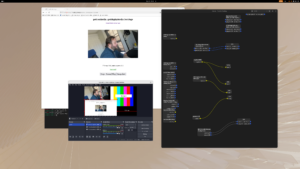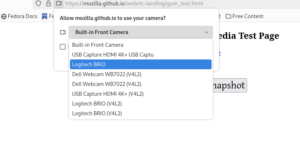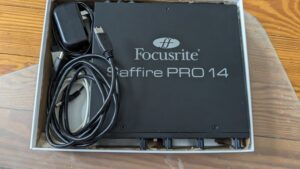Flatpak
Flatpaks has been a key part of our strategy for desktop applications for a while now and we are working on a multitude of things to make Flatpaks an even stronger technology going forward. Christian Hergert is working on figuring out how applications that require system daemons will work with Flatpaks, using his own Sysprof project as the proof of concept application. The general idea here is to rely on the work that has happened in SystemD around sysext/confext/portablectl trying to figure out who we can get a system service installed from a Flatpak and the necessary bits wired up properly. The other part of this work, figuring out how to give applications permissions that today is handled with udev rules, that is being worked on by Hubert Figuière based on earlier work by Georges Stavracas on behalf of the GNOME Foundation thanks to the sponsorship from the Sovereign Tech Fund. So hopefully we will get both of these two important issues resolved soon. Kalev Lember is working on polishing up the Flatpak support in Foreman (and Satellite) to ensure there are good tools for managing Flatpaks when you have a fleet of systems you manage, building on the work of Stephan Bergman. Finally Jan Horak and Jan Grulich is working hard on polishing up the experience of using Firefox from a fully sandboxed Flatpak. This work is mainly about working with the upstream community to get some needed portals over the finish line and polish up some UI issues in Firefox, like this one.
ToolbxToolbx, our project for handling developer containers, is picking up pace with Debarshi Ray currently working on getting full NVIDIA binary driver support for the containers. One of our main goals for Toolbx atm is making it a great tool for AI development and thus getting the NVIDIA & CUDA support squared of is critical. Debarshi has also spent quite a lot of time cleaning up the Toolbx website, providing easier access to and updating the documentation there. We are also moving to use the new Ptyxis (formerly Prompt) terminal application created by Christian Hergert, in Fedora Workstation 40. This both gives us a great GTK4 terminal, but we also believe we will be able to further integrate Toolbx and Ptyxis going forward, creating an even better user experience.
NovaSo as you probably know, we have been the core maintainers of the Nouveau project for years, keeping this open source upstream NVIDIA GPU driver alive. We plan on keep doing that, but the opportunities offered by the availability of the new GSP firmware for NVIDIA hardware means we should now be able to offer a full featured and performant driver. But co-hosting both the old and the new way of doing things in the same upstream kernel driver has turned out to be counter productive, so we are now looking to split the driver in two. For older pre-GSP NVIDIA hardware we will keep the old Nouveau driver around as is. For GSP based hardware we are launching a new driver called Nova. It is important to note here that Nova is thus not a competitor to Nouveau, but a continuation of it. The idea is that the new driver will be primarily written in Rust, based on work already done in the community, we are also evaluating if some of the existing Nouveau code should be copied into the new driver since we already spent quite a bit of time trying to integrate GSP there. Worst case scenario, if we can’t reuse code, we use the lessons learned from Nouveau with GSP to implement the support in Nova more quickly. Contributing to this effort from our team at Red Hat is Danilo Krummrich, Dave Airlie, Lyude Paul, Abdiel Janulgue and Phillip Stanner.
Explicit Sync and VRRAnother exciting development that has been a priority for us is explicit sync, which is critical for especially the NVidia driver, but which might also provide performance improvements for other GPU architectures going forward. So a big thank you to Michel Dänzer , Olivier Fourdan, Carlos Garnacho; and Nvidia folks, Simon Ser and the rest of community for working on this. This work has just finshed upstream so we will look at backporting it into Fedora Workstaton 40. Another major Fedora Workstation 40 feature is experimental support for Variable Refresh Rate or VRR in GNOME Shell. The feature was mostly developed by community member Dor Askayo, but Jonas Ådahl, Michel Dänzer, Carlos Garnacho and Sebastian Wick have all contributed with code reviews and fixes. In Fedora Workstation 40 you need to enable it using the command
gsettings set org.gnome.mutter experimental-features "['variable-refresh-rate']"
Already covered PipeWire in my post a week ago, but to quickly summarize here too. Using PipeWire for video handling is now finally getting to the stage where it is actually happening, both Firefox and OBS Studio now comes with PipeWire support and hopefully we can also get Chromium and Chrome to start taking a serious look at merging the patches for this soon. Whats more Wim spent time fixing Firewire FFADO bugs, so hopefully for our pro-audio community users this makes their Firewire equipment fully usable and performant with PipeWire. Wim did point out when I spoke to him though that the FFADO drivers had obviously never had any other consumer than JACK, so when he tried to allow for more functionality the drivers quickly broke down, so Wim has limited the featureset of the PipeWire FFADO module to be an exact match of how these drivers where being used by JACK. If the upstream kernel maintainer is able to fix the issues found by Wim then we could look at providing a more full feature set. In Fedora Workstation 40 the de-duplication support for v4l vs libcamera devices should work as soon as we update Wireplumber to the new 0.5 release.
To hear more about PipeWire and the latest developments be sure to check out this interview with Wim Taymans by the good folks over at Destination Linux.
Remote DesktopAnother major feature landing in Fedora Workstation 40 that Jonas Ådahl and Ray Strode has spent a lot of effort on is finalizing the remote desktop support for GNOME on Wayland. So there has been support for remote connections for already logged in sessions already, but with these updates you can do the login remotely too and thus the session do not need to be started already on the remote machine. This work will also enable 3rd party solutions to do remote logins on Wayland systems, so while I am not at liberty to mention names, be on the lookout for more 3rd party Wayland remoting software becoming available this year.
This work is also important to help Anaconda with its Wayland transition as remote graphical install is an important feature there. So what you should see there is Anaconda using GNOME Kiosk mode and the GNOME remote support to handle this going forward and thus enabling Wayland native Anaconda.
HDRAnother feature we been working on for a long time is HDR, or High Dynamic Range. We wanted to do it properly and also needed to work with a wide range of partners in the industry to make this happen. So over the last year we been contributing to improve various standards around color handling and acceleration to prepare the ground, work on and contribute to key libraries needed to for instance gather the needed information from GPUs and screens. Things are coming together now and Jonas Ådahl and Sebastian Wick are now going to focus on getting Mutter HDR capable, once that work is done we are by no means finished, but it should put us close to at least be able to start running some simple usecases (like some fullscreen applications) while we work out the finer points to get great support for running SDR and HDR applications side by side for instance.
PyTorchWe want to make Fedora Workstation a great place to do AI development and testing. First step in that effort is packaging up PyTorch and making sure it can have working hardware acceleration out of the box. Tom Rix has been leading that effort on our end and you will see the first fruits of that labor in Fedora Workstation 40 where PyTorch should work with GPU acceleration on AMD hardware (ROCm) out of the box. We hope and expect to be able to provide the same for NVIDIA and Intel graphics eventually too, but this is definitely a step by step effort.



